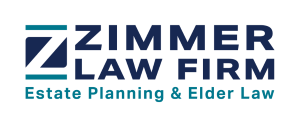By Barry Zimmer on June 24th, 2021 in Elder Law
 When you start to think about the twilight period that will inevitably follow your active retirement years, living assistance should come to mind. No one wants to rely on others for help, but the eventualities of aging are out of your control.
When you start to think about the twilight period that will inevitably follow your active retirement years, living assistance should come to mind. No one wants to rely on others for help, but the eventualities of aging are out of your control.
Seven out of 10 seniors will need help with their activities of daily living, and 52 percent will require paid care. In-home caregivers are very expensive, and you can expect to pay about $100,000 for a year in a nursing home in the Cincinnati area.
Medicare does not pay for long-term care, but Medicaid will cover these expenses if you can gain eligibility.
Medicaid Asset Limit
Medicaid is a jointly administered federal/state government program that is only available to people with sparse financial resources. The asset limit in the state of Ohio is $2000, and this figure has been in place for many years, so there is no reason to expect a change anytime soon.
Home Ownership
Your home is not considered to be a countable asset for Medicaid eligibility purposes, but there is a $603,000 equity limit in 2021. This figure is adjusted annually to account for inflation, so it will be somewhat higher next year.
If a healthy spouse is remaining in the home when their spouse is entering a nursing facility, there is no asset limit at all.
Spousal Allowances
A married person that can live independently while their spouse is in a nursing home can keep half of the assets that are countable. This is called the Community Spouse Resource Allowance, but there is a limit of $130,380 this year.
There is also a $26,076 minimum allowance. This is the least that a healthy spouse can keep even if it is more than half of the countable assets.
Income that is brought in by the spouse that is living in a nursing home must be contributed toward the cost of the care that is being received minus a $50 a month personal needs allowance.
However, if a healthy spouse is relying on the income to maintain a reasonable standard of living, they can continue to receive it. This is called the Monthly Maintenance Needs Allowance.
The maximum allowance during the current calendar year is $3259.50, and the minimum is $2155.
Medicaid Estate Recovery and the Caregiver Child Exemption
The fact that you can potentially qualify for Medicaid as a homeowner is misleading. Yes, you can gain eligibility, but Medicaid estate recovery will be looming. After your death, the program can place a lien on the home.
There is an exception to this rule will apply in some cases. If one of your adult children has been living in the home providing care for you for at least two years, you can transfer ownership to the child, and the home would be protected during the Medicaid recovery phase.
Divestitures and the Five-Year Look Back Period
You can fund an irrevocable trust or give gifts to remove countable assets from your name to qualify for Medicaid to pay for nursing home care. That’s the good news, but the bad news is that you cannot find out that you need long-term care today and give the gifts tomorrow.
There is a five-year look back period in place. All divestitures must be completed at least five years before you apply for Medicaid coverage, so advance planning is key.
Schedule a Nursing Home Asset Protection Consultation!
We are here to help if you would like to develop a nursing home asset protection strategy.
If you establish a Medicaid trust, you can receive distributions of the trust’s earnings while you are independent, and the principal wouldn’t count if and when you apply for Medicaid. This can be a great way to cover all your bases so you can go forward with peace of mind.
You can schedule an appointment at our Cincinnati elder law office if you call us at 513-721-1513, and you can use our contact form if you would rather send us a message.

